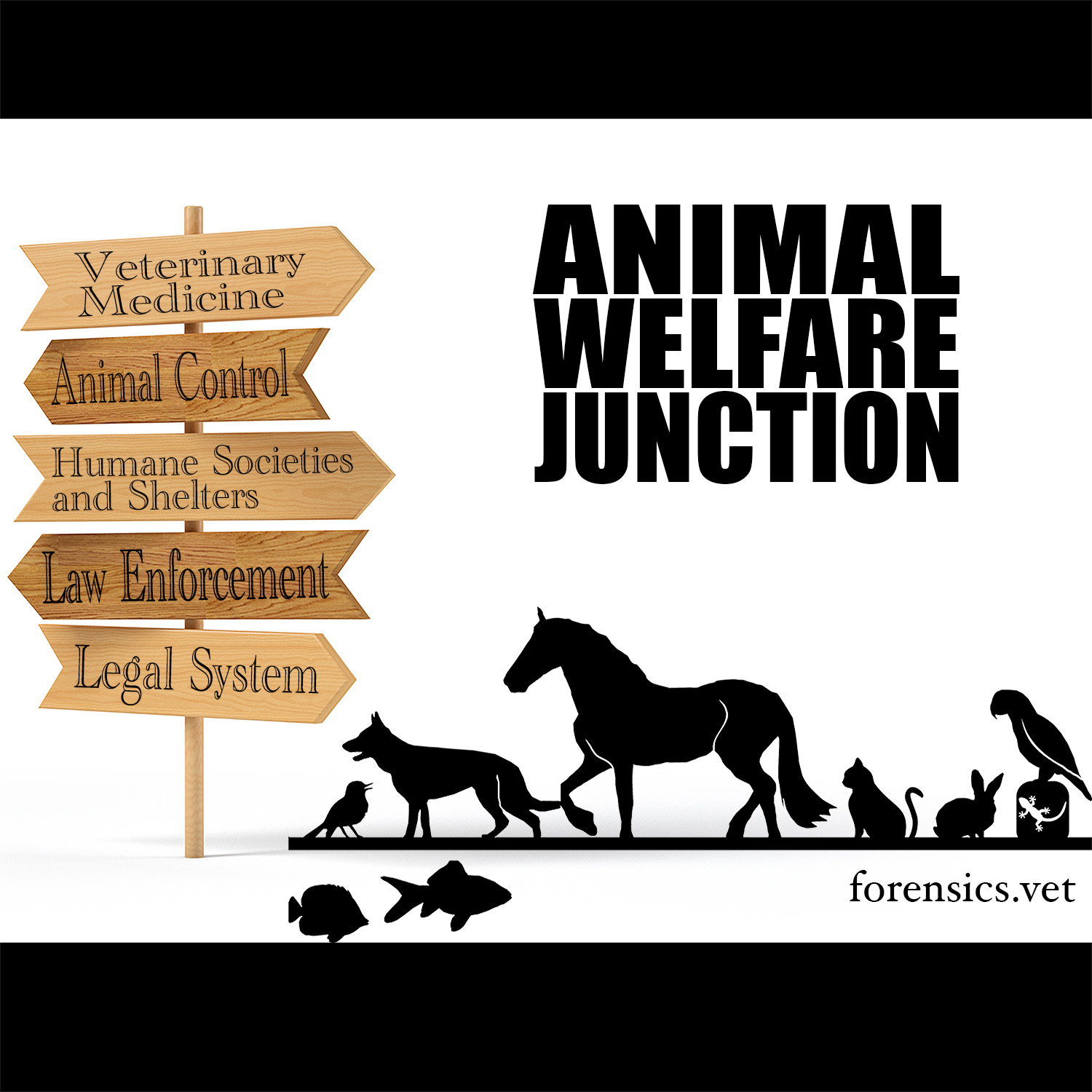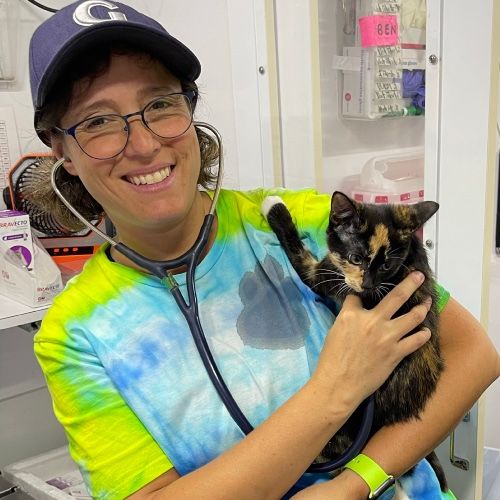UF Animal Forensic Conference 2024: Blunt Force Trauma with Rachel Barton
We are in person at the 2024 Animal Forensic Conference in Gainesville, Florida! Dr. G will be interviewing several of the speakers to give our audience a bit of the knowledge gained through the presentations. We will be releasing each interview individually to allow our listeners to find topics of interest.
Dr. Rachel Barton, Chief Veterinarian for Tallahassee Animal Services, discusses the importance of recognizing and reporting blunt force trauma in cases of suspected abuse.
We would also like to invite our listeners involved in animal cruelty investigations to visit and join the International Society for Animal Forensic Sciences https://isafs.org/
Mentioned in this episode:
Keep it Humane Podcast Network
The Animal Welfare Junction is part of the Keep It Humane Podcast Network. Visit keepithumane.com/podcastnetwork to find us and our amazing animal welfare podcast partners.
Transcript
Our next guest is Rachel Barton, Chief Veterinarian at
2
:the Tallahassee Animal Services.
3
:Thank you so much for being here
and welcome to The Junction.
4
:Rachel Barton: Thank you for having me.
5
:DrG: So can you start by letting
us know about your background,
6
:what you do now, and how it
involves the field of forensics?
7
:Rachel Barton: Sure.
8
:Um, I've been in veterinary
medicine as a practicing
9
:veterinarian for over 25 years now.
10
:I spent about seven years
in private practice.
11
:But 18 years ago, I, um, sort of took
the leap, uh, into shelter medicine,
12
:which was a new sort of area of practice.
13
:When I graduated from vet school,
veterinarians didn't work in animal
14
:shelters, so it's nothing I could
have ever imagined doing back
15
:when I was a, a new vet student.
16
:Uh, but at the shelter, um, I
work for the city of Tallahassee.
17
:And I work with animal control
for the city and also with
18
:animal control for the county.
19
:And just occasionally they were
asking me to take a look at animals
20
:that they had some concerns about.
21
:You know, hey doc, what, what
might this be or can you help
22
:us think about this here?
23
:And eventually some of those
cases were actually moving
24
:forward and getting prosecuted.
25
:And so, as time progressed, as our
community became more progressive, as
26
:our politicians became more interested in
pursuing crimes involving animals, um, I
27
:recognized that there was a need to get
some extra training and expertise in that,
28
:so I actually, um, completed the Graduate
Certificate in Veterinary Forensics
29
:at the University of Florida.
30
:I also had the opportunity to, um, do
some volunteer work with the ASPCA on some
31
:of their large, uh, animal crimes cases,
hoarding, dogfighting, things like that.
32
:And so over the years, just through
my experiences, but then also
33
:through my education, um, I've
started working more and more.
34
:And Tallahassee is a very progressive
community and they take crimes
35
:against animals very seriously.
36
:So, uh, you When I first started there,
it might be one or two cases a year,
37
:and now we are seeing one or two cases
a week that are being investigated.
38
:DrG: Nice.
39
:That's really good to hear, because it
is, uh, it's something that we see a lot.
40
:Animal crime's not being investigated
because either there's no resources, or
41
:people think it's just a dog, it's just
a cat, and they don't think about the,
42
:the consequences of animal violence.
43
:Your topic today was
about blunt force trauma.
44
:So what does that mean?
45
:Rachel Barton: So blunt force trauma
simply is some sort of trauma, some
46
:sort of injury that's occurred when a
body and an object impact each other.
47
:It may be that the object is moving
and it hits a stationary body.
48
:It may be that the body is moving
and hits a stationary object.
49
:Or maybe the body and the object
are moving and impact each other.
50
:And it could be something as simple as
a hit or a kick or a punch or throwing
51
:an animal across the room and it
hitting the wall or hitting the floor.
52
:DrG: So is, is all blunt force trauma
intentional or can it be accidental?
53
:Rachel Barton: Well, I've learned
from watching my own pets and even
54
:watching my own child that, um,
there can be plenty of accidental,
55
:unintentional blunt force trauma.
56
:Accidents happen.
57
:Pretty much every bruise and, and,
and, uh, cut that I have on my
58
:body is from an accident, right?
59
:So, um, blunt force trauma
doesn't equal abuse.
60
:But blunt force trauma
happens in cases of abuse.
61
:And it's certainly, there are patterns
to where those injuries occur on
62
:the body that can be red flags to
suggest that maybe this blunt force
63
:trauma injury might actually be
from abuse and not from an accident.
64
:And sometimes there won't necessarily
be patterns on the body that suggest
65
:that that's abuse, but it might be that
the story that we're told for why that
66
:injury occurred doesn't fit with the
injuries that we're seeing on the body.
67
:So it's a combination of where
they are on the body, but also,
68
:what's the story going along?
69
:What's the explanation for
why that injury occurred?
70
:DrG: I saw something like that several
years ago, that I received a dog that
71
:had a fractured femur, and the story was
that it was walking along the sidewalk,
72
:and it tripped and it fell off the curb.
73
:And it's like, there
is no curb high enough.
74
:I don't care how small the dog was.
75
:And then after investigating and showing
people the images, we did find out
76
:that it was a case of domestic violence
and the boyfriend had kicked the dog.
77
:So, it's very important, as you mentioned,
to hear the story and then see how
78
:your findings match the story, right?
79
:So, what kind of injuries do
you normally find when you're
80
:evaluating for blunt force trauma?
81
:Rachel Barton: When we see blunt force
trauma injuries, uh, we see things
82
:like abrasions, which, you know, is
where the skin is irritated but not
83
:completely damaged all the way through.
84
:Certainly, we can see bruising.
85
:Uh, we can see what we call lacerations,
which is where the skin or the tissue,
86
:if it's inside the body, you know,
an organ can lacerate, it's where
87
:it splits, and that's different from
a cut where it's made with a sharp,
88
:clean, you know, a knife or a blade.
89
:Um, the, the wounds look a little
bit differently when the skin
90
:splits from force versus being cut.
91
:And then we also see things like, uh,
avulsions where a tissue tears off
92
:another tissue where it's supposed
to be connected, like a, a ligament
93
:or a tendon can rip off of the bone.
94
:And we also see broken bones.
95
:And even, um, we can see trauma to
the brain and spinal cord that can
96
:cause, um, certain signs and symptoms
that we might see in a patient.
97
:DrG: So can you always find
evidence of blunt force trauma just
98
:from a physical examination, or
are some of these signs, hidden?
99
:Rachel Barton: That's
an excellent question.
100
:We don't always see signs
on the outside of the body.
101
:So an animal, or a person for that matter,
can sustain a significant blunt force.
102
:impact that can sort of move through
the tissues in the body, and it
103
:may not cause a big injury to the
skin, but can cause a substantial
104
:injury to the tissues deeper below.
105
:The other thing that's a little
bit different is, it may seem a
106
:little counterintuitive actually, is
that animals skin acts differently
107
:to blunt forces than people's.
108
:So if I were to get smacked by a baseball
bat, I would expect to have a bruise
109
:that I could just see with the naked
eye, but our pet's skin may not bruise.
110
:They have the hair that can protect
the skin, the tissues with the skin are
111
:a little bit different than ours are.
112
:And so there are times where I
have animals that have sustained
113
:significant blunt force trauma injuries.
114
:They may have significant broken
bones, um, lacerated organs inside
115
:their body, and we don't see a single
bruise on the outside of the body.
116
:Plus, it can take a while
for a bruise to develop.
117
:So if I'm examining an animal shortly
after it's undergone that trauma, I may
118
:not be able to see any bruising anyways,
cause they haven't developed yet.
119
:DrG: So once you have examined, uh,
an animal and found these injuries
120
:and you're writing your report, what
kind of things can you say or not
121
:say as far as if it looks like an
accidental or intentional injury?
122
:Rachel Barton: A lot of what we do is
we take our, our findings during our
123
:examination, uh, you know, our, our
evidence, if you will, and, and we
124
:really do have to sort of put it in
context to the whole investigation, and
125
:so that's where we're communicating with
the investigators and wanting to get as
126
:much information about the situation.
127
:My report may not be able to say this
bone is broken because the animal fell
128
:off of a step that was, you know, six
feet high, but my report can certainly
129
:say that they're saying this dog was
hit by a car and these injuries did
130
:not happen from being hit by a car.
131
:DrG: I actually just recently
had a case like that.
132
:The owner basically beat his
dog to death with a rock.
133
:But he had said that the dog had been
hit by a car just previous to that.
134
:And we were able to say, okay, these
are the injuries that we found.
135
:And we did not find any injuries that
were consistent with being hit by a car.
136
:Right?
137
:How is this important, not just
for bringing justice to the animal
138
:victim, but just as protecting
the community in general?
139
:Rachel Barton: We know there is a
direct link between violence against
140
:animals and violence against people,
especially other people living
141
:in the same home as that animal.
142
:There's a saying, you know, when animals
are being abused, people are at risk.
143
:When people are being
abused, animals are at risk.
144
:And so, in some, and that's one of the
reasons I think why in Tallahassee, we're
145
:taking these crimes more seriously, is
because local law enforcement enforcement
146
:recognizes that, you know, well, yes,
it may just be a dog to some people.
147
:Um, there may be children in the home.
148
:There may be seniors, elderly
individuals in the home.
149
:There may be vulnerable
adults in the home.
150
:Um, and everybody in that home is at risk.
151
:And certainly, you know, violence
against animals can be a sentinel
152
:for violence against others.
153
:DrG: Well, thank you so much for
sharing your knowledge and thank you
154
:so much for everything that you do
for animals and for the community.
155
:Rachel Barton: Thank you
so much for having me.
156
:I've enjoyed speaking with you.

